13 Elaborate Activity 3
Activity #E3: Understanding types of knowledge
We intuitively understand that there are many ways to learn. Cognitive psychologists spend a lot of time considering how different ways of thinking influence how we learn. Many years ago a person named Benjamin Bloom (now that name is an easy one to remember – think of a flower) came up with a system to describe these ways of thinking. Your teachers often use this system when they decide what they would like you to learn in a course.

The triangle represents many types of learning. Each color indicates a specific type. The base of the triangle forms the foundation for learning. As you move up to the top of the triangle, deeper learning occurs, along with that a better chance of remembering information. Like a climb up a mountain where your goal is to reach the summit, when you learn something most fully and completely, you reach the top of the triangle.
Take a look at the triangle and its colors:
Purple/Remembering
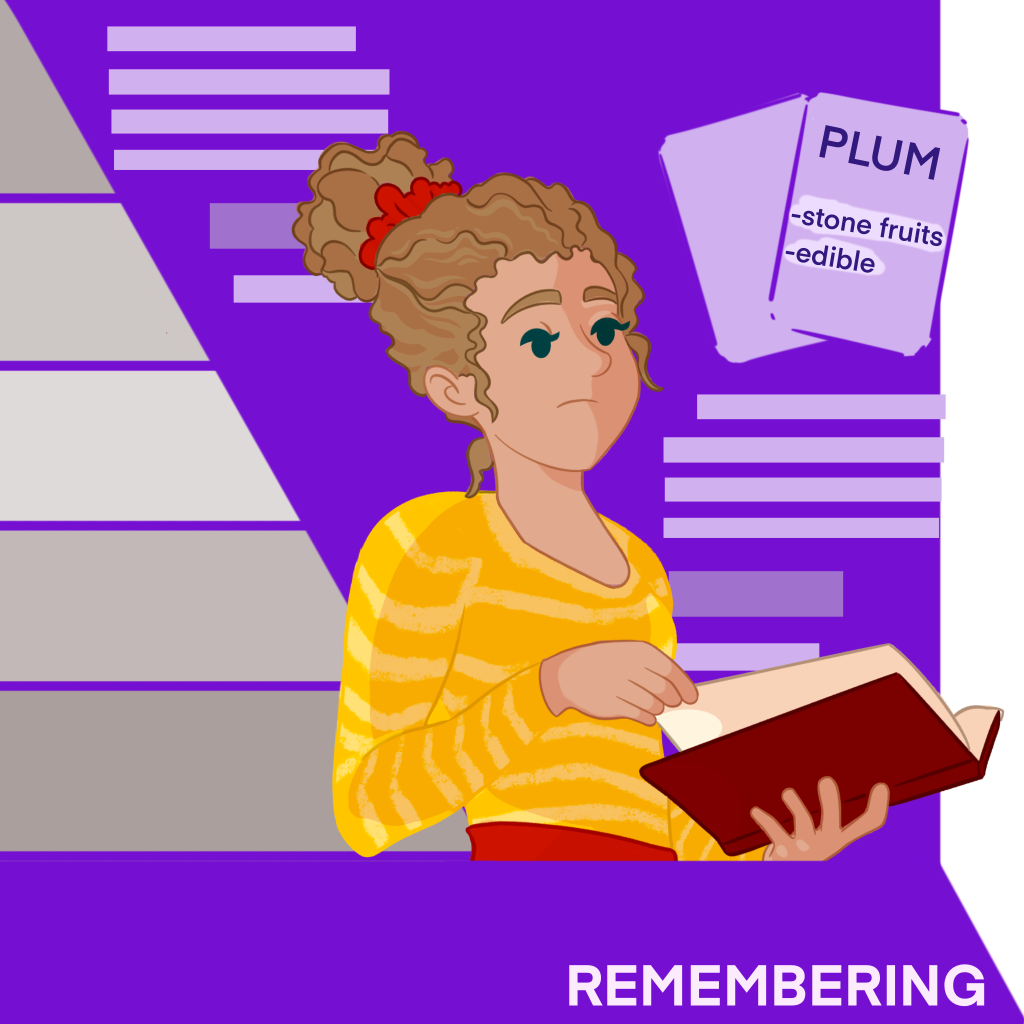
Purple is at the base and indicates learning to remember. This is the most basic or simple way to learn. It is where you start in most introductory college classes. Think of notecard land. You often spend a lot of time in introductory type classes like biology or psychology focusing on definitions and facts before anything else. This is also quite dull for some students and often leads to memorization without any excitement for learning. On their own, the facts can be boring and quite difficult to remember. That is where moving up the colors of the triangle become helpful.
Blue/Understanding
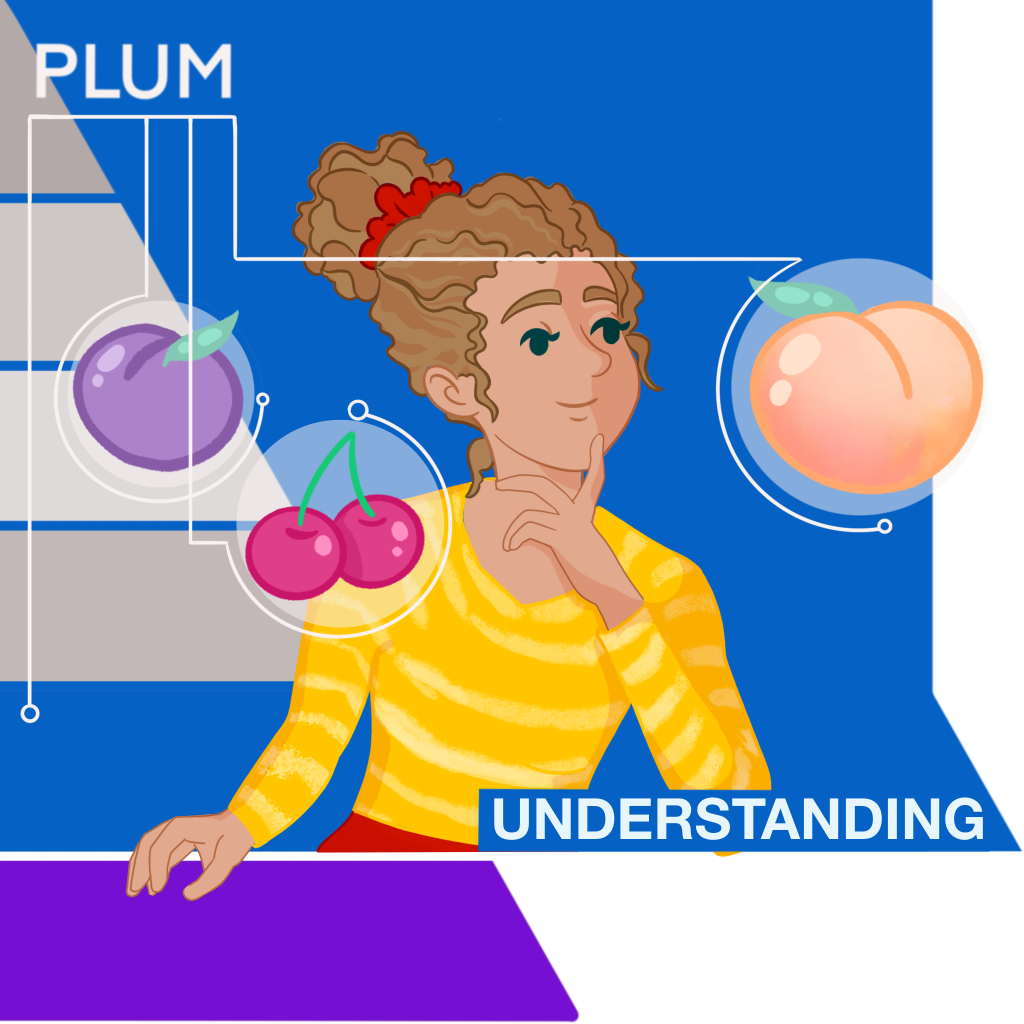
The next color, Blue/Understanding, is when you are asked to think more deeply about a piece of knowledge by learning to understand the meaning of information. To do this, you move beyond the most basic definition and add an example.
Green/Applying
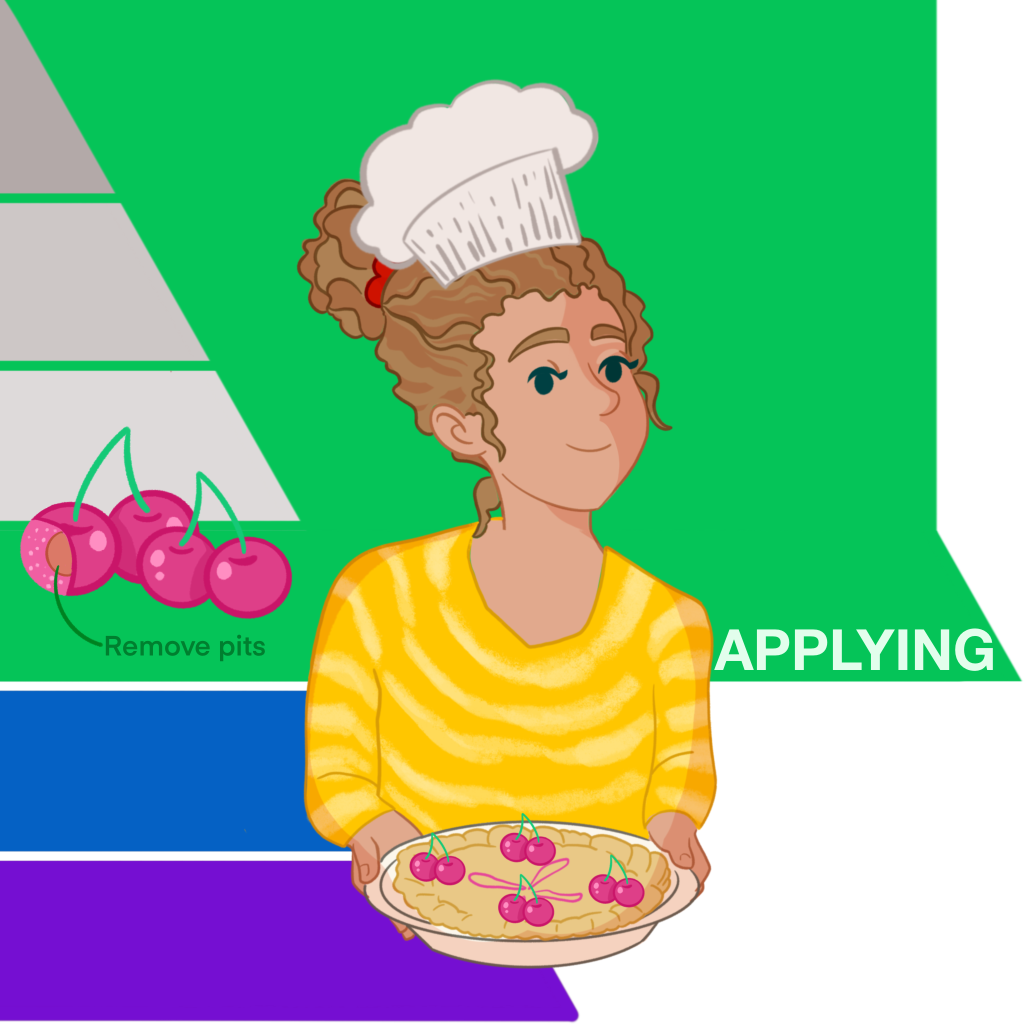
The next color, Green/Applying, represents applying or using what you have learned so far to enhance what you know. Once you have a fact and an example, you can use it or apply it to a totally new but related situation.
Yellow/Analyzing
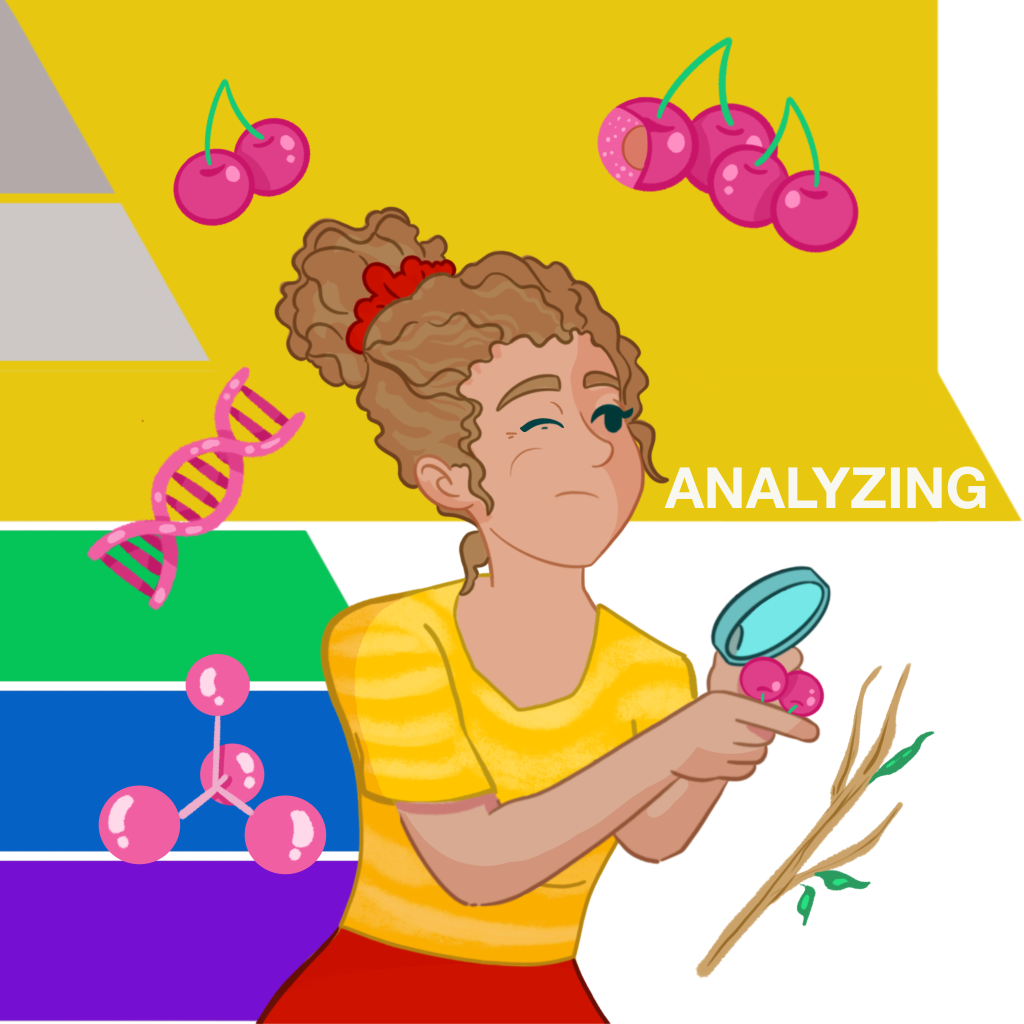
Moving on up the triangle, you’ll see yellow. Yellow/Analyzing represents analyzing information. This goes beyond application. To analyze means to take apart. Here you apply the information to a new situation and then break pieces of that situation down further to look at how the pieces relate. Green and yellow types of learning most often occur in upper-level courses in college. In these classes, you often are expected to apply knowledge and analyze it to show what you have learned.
Orange/Evaluating
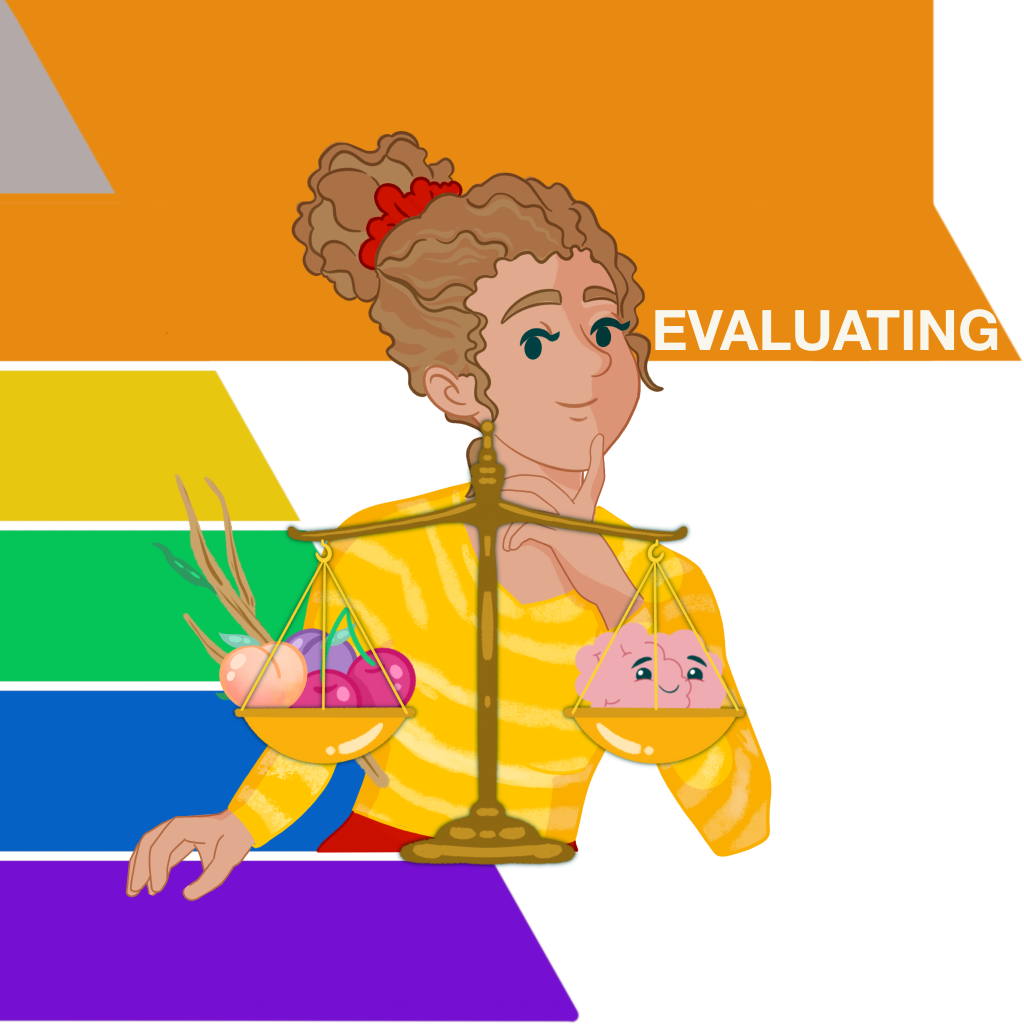
Near the top is the color orange. Orange/Evaluating represents evaluating. When you evaluate, you make decisions about knowledge and judge its value.
Red/Creating
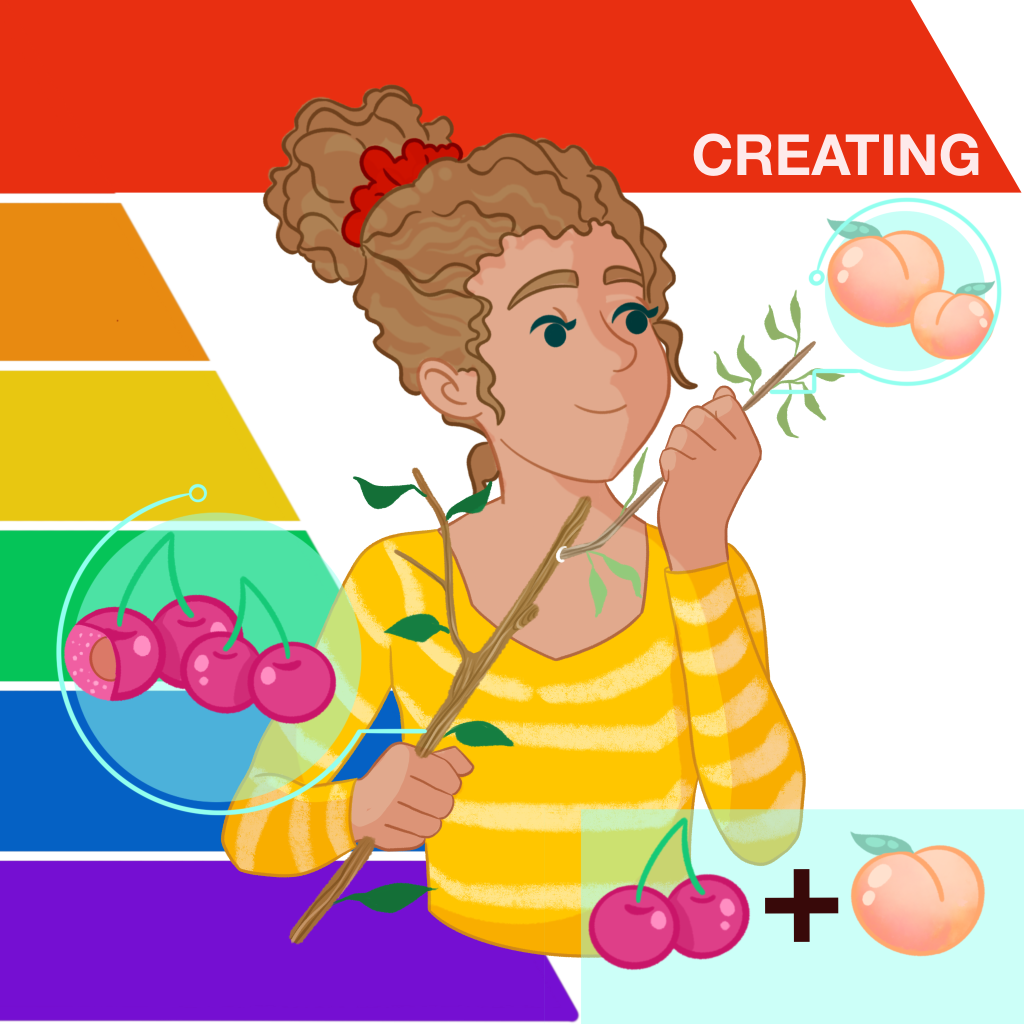
Finally, Red/Creating represents making something totally new that relates to all of the knowledge that has come before. In college think of an original painting, a new design, or a research project as examples of creating something new. You tend to complete creative projects in senior-level courses.
